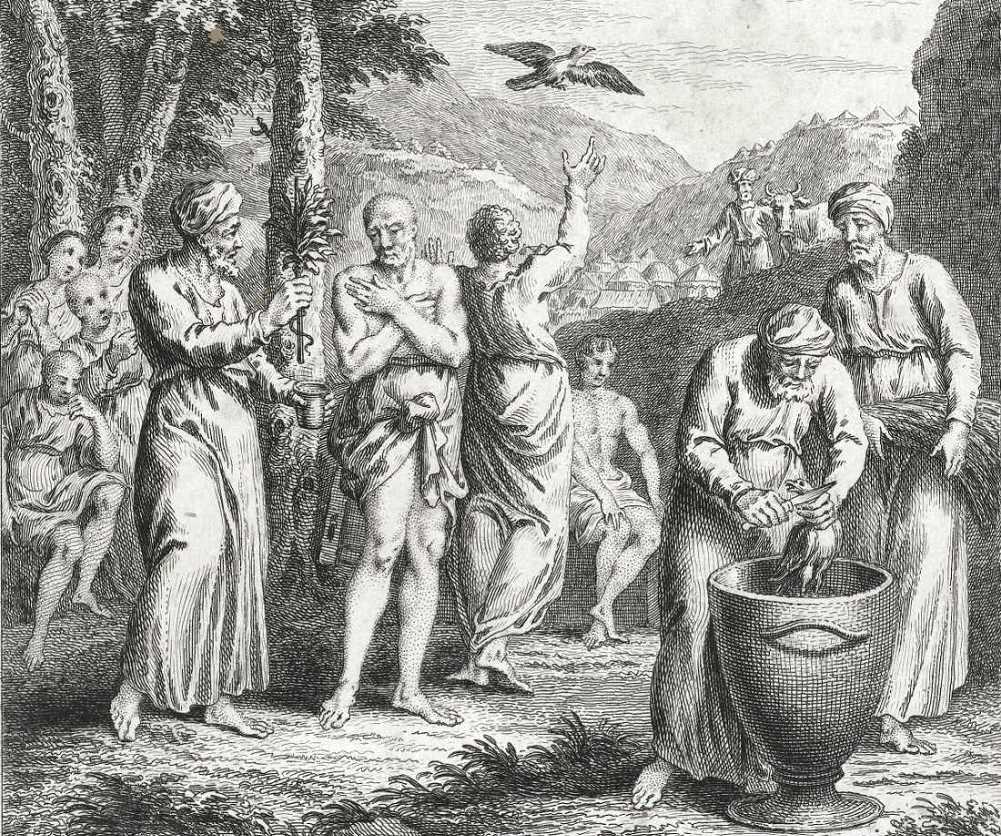Parashat Metzora is a portion of the Torah that continues the theme of ritual purity and impurity from Parashat Tazria. This section of the Torah is found in Leviticus chapter 14 and deals with the purification of a person who has been afflicted with tzara’at, a spiritual affliction that manifests itself physically on the skin. The name Metzora is derived from the Hebrew word metzora, which is the term used to describe a person afflicted with tzara’at.
The opening section of Parashat Metzora describes the purification process for a person who has been healed of tzara’at. The process involves a series of offerings and rituals, including the offering of two birds, the shaving of hair, and immersion in a mikveh. Once the purification process is complete, the person is considered pure and can rejoin the community.
The next section of Parashat Metzora deals with the purification of a house that has been afflicted with a kind of tzara’at. If a house develops a greenish or reddish discoloration on its walls, it must be examined by a priest to determine if it is afflicted with tzara’at. If the priest confirms the diagnosis, the house must be emptied and sealed off for seven days. After seven days, the priest returns to inspect the house again. If the discoloration has spread, the affected stones must be removed and replaced. If the discoloration does not reappear, the house is considered pure and can be reoccupied.
Parashat Metzora may seem like a strange and obscure portion of the Torah, but it is actually rich with symbolism and meaning. The affliction of tzara’at is not simply a physical disease, but is seen as a manifestation of spiritual impurity. According to Jewish thought, the affliction was caused by a variety of sins, including slander, arrogance, and selfishness. Therefore, the purification process was not simply about restoring physical health, but was also about repairing the soul and restoring spiritual purity.
The purification process for a house afflicted with tzara’at is also symbolic of the importance of maintaining a clean and pure environment. Just as a physical house can become contaminated and require purification, so too can our homes and communities become contaminated by negative influences and require spiritual purification.
Parashat Metzora teaches us about the importance of self-reflection and spiritual growth. The affliction of tzara’at was seen as a wake-up call, a sign that something was not right in one’s life and needed to be addressed. The purification process was a chance to reflect on one’s actions and make amends for any sins committed. In this way, the affliction of tzara’at was seen as a kind of spiritual therapy, a chance to heal not only the body but also the soul.
In conclusion, Parashat Metzora is a portion of the Torah that deals with the purification of a person or house afflicted with tzara’at. While the laws may seem obscure and irrelevant to our modern lives, they are actually rich with symbolism and meaning. By studying and understanding these laws, we can gain a deeper appreciation for the importance of maintaining spiritual purity and the role of self-reflection and spiritual growth in our lives.



















One Response